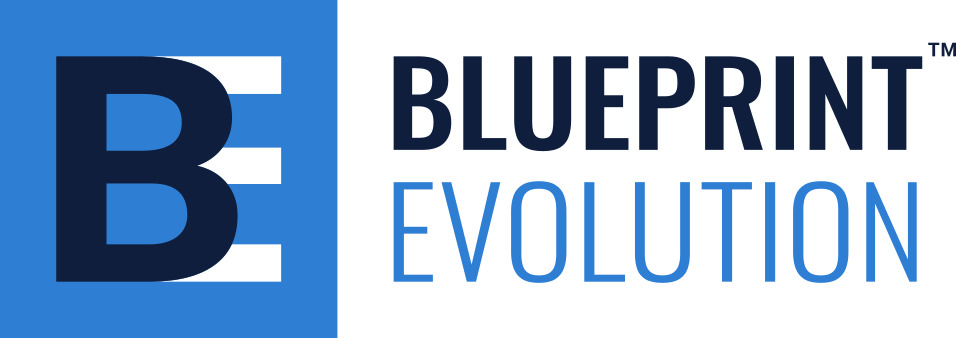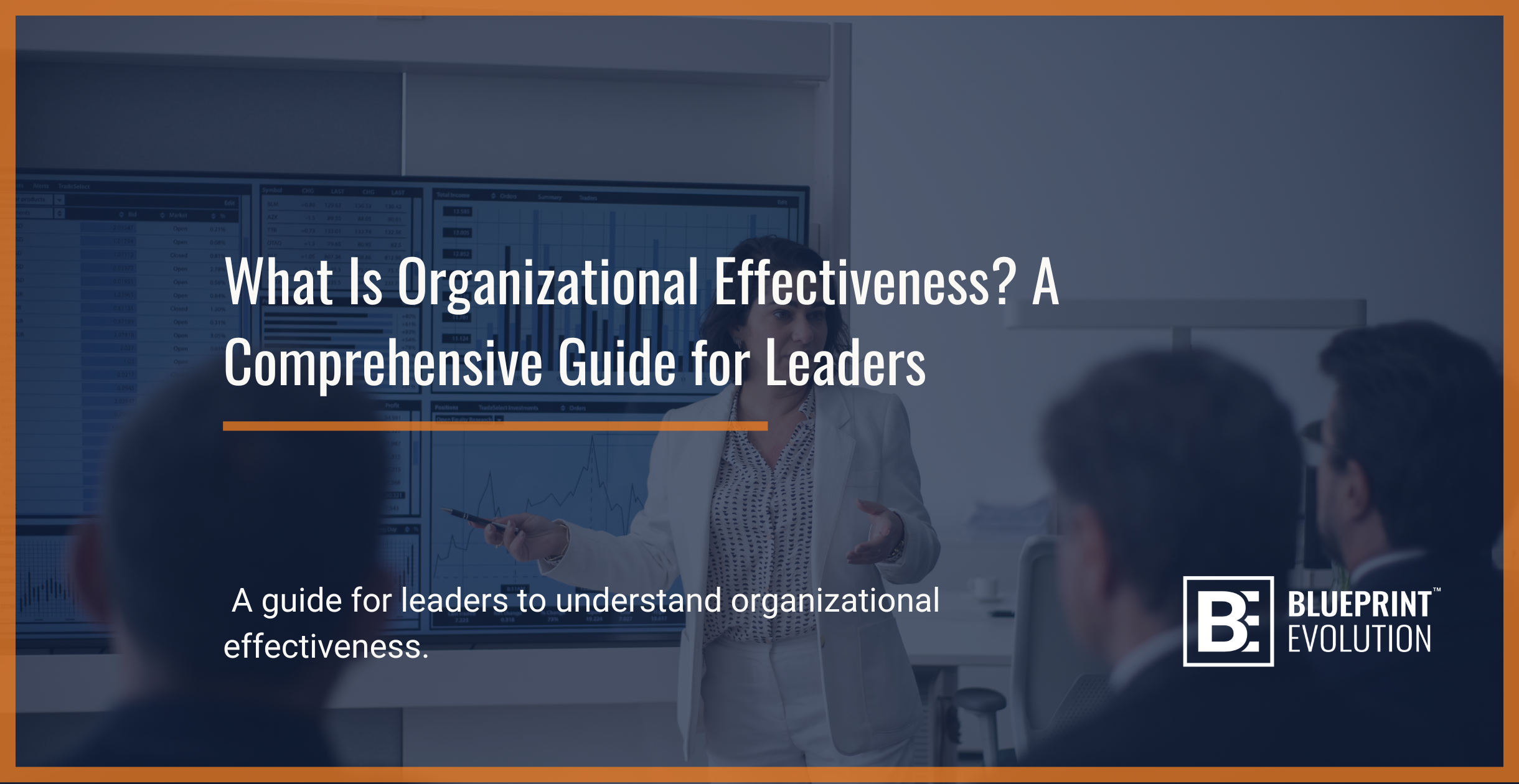Organizations can no longer thrive on strategy alone. Execution, alignment, adaptability, and engagement are just as critical—and that’s where organizational effectiveness comes into play.
Organizational effectiveness (OE) is a comprehensive approach to how well an organization achieves its goals using the resources it has. It combines strategy, people, systems, and culture to create a resilient, productive, and high-performing organization.
This blog breaks down the concept of organizational effectiveness, explores frameworks for assessing and improving it, and shares why it’s essential for leadership success, especially for growing companies and mid-sized businesses trying to gain a competitive edge.
Defining Organizational Effectiveness
At its core, organizational effectiveness refers to the degree to which an organization meets its stated objectives efficiently and sustainably. It’s about doing the right things and doing things right.
This concept moves beyond just profitability or growth. It encompasses how well a company:
-
- Aligns strategy with execution
- Motivates and develops talent
- Innovates and adapts to change
- Delivers value to customers and stakeholders
- Utilizes systems and processes to achieve consistency and scale
- Aligns strategy with execution
Organizational effectiveness is both an outcome and a capability. Effective organizations don’t just achieve results—they’re built to keep succeeding, even as circumstances change.
Why Organizational Effectiveness Matters
Organizational effectiveness isn’t just theoretical—it’s measurable, and it has real-world implications.
Consider these statistics:
-
- Companies in the top quartile for organizational health are 2.2 times more likely to outperform their competitors financially.
- According to Gallup, highly engaged teams drive 21% higher profitability—underscoring the direct connection between employee experience and organizational success.
- Additionally, organizations with strong alignment between culture and strategy are 12 times more likely to achieve high performance.
Effective organizations are more likely to adapt, grow, and outperform.
Real-World Example: The Organizational Turnaround at Warby Parker
Warby Parker, the eyewear brand founded in 2010, is now widely recognized—but that wasn’t always the case. In its early growth stages, the company grappled with a common startup challenge: scaling rapidly while maintaining its founding culture and ensuring consistency across key functions like customer service, operations, and marketing.
As Warby Parker scaled, growing pains began to show:
-
- Customer service wait times increased.
- Order fulfillment errors became more frequent.
- Employees voiced uncertainty around priorities and decision-making authority.
- Customer service wait times increased.
Rather than resorting to short-term fixes, Warby Parker’s leadership took a strategic approach—investing in organizational effectiveness. They:
-
- Introduced clear communication rhythms across cross-functional teams.
- Implemented OKRs (Objectives and Key Results) to align efforts company-wide.
- Developed internal training programs rooted in shared values and problem-solving.
- Re-engineered systems and workflows to boost speed without compromising quality.
- Introduced clear communication rhythms across cross-functional teams.
The results were significant:
-
- Customer support response times dropped by over 50%.
- The company sustained a Net Promoter Score (NPS) above 80.
- They grew from a small team to hundreds of employees—while maintaining clarity, engagement, and cohesion.
- Customer support response times dropped by over 50%.
Warby Parker’s journey proves that even mission-driven, high-growth companies risk stumbling without intentional focus on organizational effectiveness. Their continued success wasn’t just about offering a trendy product or disrupting an industry—it was about building the internal capacity to scale with purpose, precision, and alignment.
The 5 Core Elements of Organizational Effectiveness
While different frameworks exist, most experts agree on these five foundational elements:
- Strategy Alignment
Effective organizations ensure that every department, team, and role is aligned with the organization’s strategic goals. This clarity helps focus effort and energy in the right direction.
Leadership Tip: Leaders should regularly revisit and communicate strategic priorities, ensuring that goals at every level roll up into the organization’s mission. - Leadership and People Development
Organizations succeed or fail based on the strength of their leadership and talent pipeline. Leadership isn’t just about authority—it’s about vision, influence, communication, and adaptability. Leadership is both a process and a practice—developed over time through intentional action and reflection.
According to a DDI Global Leadership Forecast, organizations with strong leadership development programs are 4.2 times more likely to outperform competitors. - Culture and Values
Culture is not a side effect of organizational life—it is a primary driver of performance. Organizations with shared values and norms tend to have higher levels of collaboration, trust, and resilience.
Leadership Tip: Evaluate how your organization’s stated values show up in behavior, decision-making, and hiring. - Processes and Systems
Clear workflows, repeatable systems, and effective use of technology allow organizations to operate efficiently and scale effectively.
Case Insight: One of GreshamTech’s biggest wins came from simply mapping out the product fulfillment process and reducing redundancies that had never been reviewed in 15 years. - Performance Measurement
You can’t improve what you don’t measure. Organizations need systems for tracking progress, identifying areas for growth, and celebrating success.
Leadership Tip: Use a mix of quantitative (KPIs) and qualitative (360 feedback, engagement surveys) metrics to assess effectiveness.
Why Leaders Must Prioritize OE
People often think organizational effectiveness is something that just happens when the right people are hired or the right product is launched. But in reality, OE is an ongoing commitment that requires:
-
- Regular evaluation and refinement
- Cross-functional collaboration
- Honest, ongoing feedback loops
- Clear priorities and well-defined roles
- Regular evaluation and refinement
Organizational effectiveness isn’t a one-time achievement—it’s a sustained commitment to aligning people, systems, and strategies to drive meaningful impact.
When leaders invest in OE, they lay the groundwork for resilience, foster a culture of accountability, and unlock the conditions for innovation.
But when it’s overlooked, even the brightest ideas and most talented individuals can falter—undone by misalignment, inefficiency, or breakdowns in communication.
Make Effectiveness a Core Leadership Competency
Organizational effectiveness isn’t the job of HR, operations, or the executive suite alone. Every leader’s responsibility is to create the conditions where people, processes, and purpose align to drive results.
Whether you’re leading a team of five or a company of 500, investing in OE means investing in your people, your strategy, and your future.
Start small: Map a process, clarify a goal, and have a conversation about values.
These aren’t massive undertakings—but they are the essential building blocks of an effective, high-performing organization.







